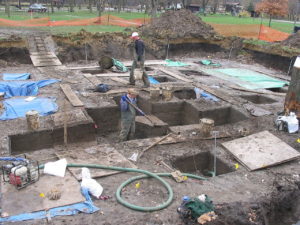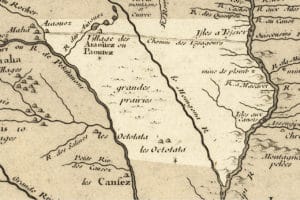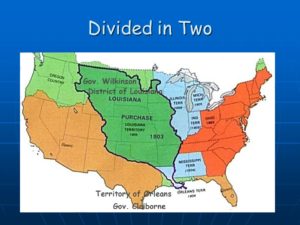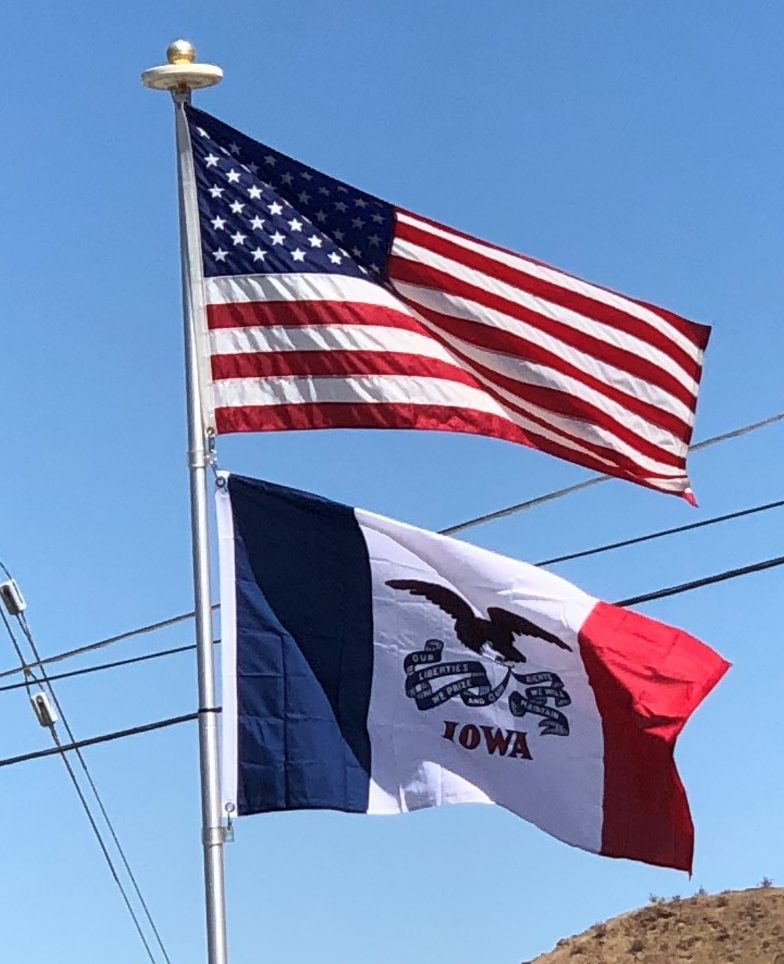More than 3,000 years ago, during the Late Archaic period, American Indians in Iowa began utilizing domesticated plants. The subsequent Woodland period saw an increased reliance on agriculture and social complexity, with increased use of mounds, ceramics, and specialized subsistence. During the Late Prehistoric period (beginning about AD 900) increased use of maize and social changes led to social flourishing and nucleated settlements.

The arrival of European trade goods and diseases in the Protohistoric period led to dramatic population shifts and economic and social upheaval, with the arrival of new tribes and early European explorers and traders. There were numerous Indian tribes living in Iowa at the time of early European exploration. Tribes which were probably descendants of the prehistoric Oneota include the Dakota, Ho-Chunk, Ioway, and Otoe. Tribes which arrived in Iowa in the late prehistoric or protohistoric periods include the Illiniwek, Meskwaki, Omaha, and Sauk.
Early Exploration and Trade, 1673–1808:
The first known European explorers to document Iowa were Jacques Marquette and Louis Jolliet who traveled the Mississippi River in 1673 documenting several Indian villages on the Iowa side. The area of Iowa was claimed for France and remained a French territory until 1763. The French, before their impending defeat in the French and Indian War, transferred ownership to their ally, Spain. Spain practiced very loose control over the Iowa region, granting trading licenses to French and British traders, who established trading posts along the Mississippi and Des Moines Rivers.
Iowa was part of a territory known as La Louisiane or Louisiana, and European traders were interested in lead and furs obtained by Indians. The Sauk and Meskwaki effectively controlled trade on the Mississippi in the late 18th century and early 19th century. Among the early traders on the Mississippi were Julien Dubuque, Robert La Salle, and Paul Marin. Along the Missouri River at least five French and English trading houses were built before 1808. In 1800, Napoleon Bonaparte took control of Louisiana from Spain in a treaty.

After the 1803 Louisiana Purchase, Congress divided the Louisiana Purchase into two parts—the Territory of Orleans and the District of Louisiana, with present-day Iowa falling in the latter. The Indiana Territory was created in 1800 to exercise jurisdiction over this portion of the District; William Henry Harrison was its first governor. Much of Iowa was mapped by Zebulon Pike in 1805, but it was not until the construction of Fort Madison in 1808 that the U.S. established tenuous military control over the region.

War of 1812 and Unstable U.S. Control:
Fort Madison was built to control trade and establish U.S. dominance over the Upper Mississippi, but it was poorly designed and disliked by the Sauk and Ho-Chunk, many of whom allied with the British, who had not abandoned claims to the territory. Fort Madison was defeated by British-supported Indians in 1813 during the War of 1812, and Fort Shelby in Prairie du Chien, Wisconsin, also fell to the British. Black Hawk took part in the siege of Fort Madison.
